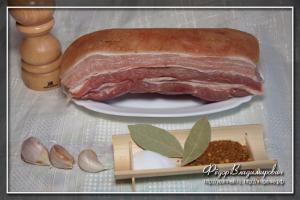Clematis amaze many with its elegance and beauty, enchanting with the harmonious shade of flowers, their endless number, and dark green foliage. But among them there is one that all flower growers, without exception, dream of! The name of this variety is Purpurea Plena Elegance, its photo can be seen in every catalog. Despite small size flower, the variety is popular due to its quality characteristics. You can get acquainted with the true miracle of selection here by studying the description and watching the video!
Clematis variety Purpurea Plena Elegans: brief description
This clematis variety is of medium height (maximum height - 2.8-3.5 m), it quickly and easily gains vegetative mass during the season. That is why it is used not only in group ensembles or for landscaping hedges, walls of gazebos, pergolas or decorative arches, and other architectural forms, but also as a “finishing” material. With the help of a spreading vine it is simple and easy to decorate the wall of an old building and even a trash bin!
The peculiarity of the variety is not only in its practicality and comparatively easy care, but also unconditional beauty. climbing vine It amazes with the abundance of flowers of small diameter, of which there are 100-120 pieces on one branch. Each double flower, 5-8 cm in diameter, consists of several layers of complexly textured petals, twisted into a spiral towards the outer edge. A striking feature is the complete absence of stamens and a languidly rich burgundy shade.

Variety Purpurea Plena Elegans
In this case, several qualitative components that characterize the variety can be identified. This:
- frost resistance. The incredibly beautiful Purpurea Plena Elegance variety tolerates significant frosts (up to -40C) and is also resistant to diseases. This makes it a favorite among many professionals and magical for beginning gardeners;
- long flowering throughout the summer months and September;
- low maintenance: sufficient watering, weeding, mulching, fertilizing with organic/mineral fertilizers;
- fast growth rate;
- attractive appearance.
Attention! Perfect solution as a support - a network woven using the macrame technique, for example. It will look original and authentic against the backdrop of a house with the same exterior style.
But despite the fact that the variety is characterized only on the positive side, its cultivation requires time, experience and true skill, expressed by desire. Therefore, planting and growing clematis of this variety in the first few years of life should be given Special attention. And a fabulous miracle will decorate your flower garden, arch or recreation area in the garden, amazing with its splendor!
A colorful miracle in the garden: features of cultivation and care
In order to grow healthy and powerful clematis Purpurea Plena Elegans on your own plot, you must comply with simple rules. They should not be ignored, because they represent the experience and knowledge of professional flower growers, breeders, and members of the International Clematis Society.

Take care of support for clematis
So, wonderful clematis is:
- a well-chosen landing site. This variety feels great in any side of the garden, but in the south the flower will like it most;
- a properly created planting hole. If you want more details, study the design of a pit for a vineyard, they are almost identical. Do not forget that 1-2 years of clematis life is the development of its root system, therefore, health and long-term joy;
- protection from spring waters and autumn floods. Clematis tolerates short-term drought well, but standing water can destroy the plant. Dealing with such a scourge is simple: you can pour sand or compost on the base of the trunk, and also build a water outflow from the base of the plant;

For better flowering, preventative pruning is necessary.
- artificial support if the flower is planted in the middle of the garden. Speed dial vegetative mass, abundant flowering and considerable height - this is a certain weight that needs to be maintained. Otherwise, the plant may break;
- pruning strictly according to Feng Shui. This variety belongs to the 3rd type, which implies severe pruning: every year, woody shoots are left at the bush, the length of which is 30-50 cm. It is on them that young shoots will grow next spring, which will produce flowers!
Attention! For pruning, use pruning shears or special garden shears. They give an even cut that heals quickly.
These are all the secrets that are revealed about the Purpurea Plena Elegance variety for those who really want to grow a magical beauty on their site. And all that remains is to admire the iridescent and fragrant burgundy-colored flowers!
Clematis care: video
Clematis purpurea Plena elegans- a profusely flowering variety from the Viticella group. Its main characteristics, advantages and care rules are described in more detail in this article.
Description of the variety
This one was bred in 1899. It is a medium-sized variety, its length reaches 3-4 m. It blooms profusely from June to September. The flowers do not exceed 10 cm in size, are burgundy in color and are always double. The buds are located along the entire length of the vine. There can be over 100 flowers on one shoot.
Purpurea Plena Elegance belongs to pruning group 3, i.e. it is heavily pruned, and flowering occurs on young shoots. Has the ability to grow back very quickly.
Is frost-resistant variety, can be grown from climate zones 4 to 9.
Clematis of this variety can be used for planting in open ground, and as a container culture. Due to its unpretentiousness, it is ideal for beginning flower growers, as well as for use in landscaping.
Advantages and disadvantages

Clematis Purpurea Plena Elegans has a number of advantages:
- Unpretentiousness. During cultivation it will require a minimum of care.
- High winter hardiness. With a little shelter it can survive even the coldest winters.
- Intensive growth.
- Flowering occurs on the shoots of the current year.
- Compared to large-flowered varieties, it has a longer flowering period.
The disadvantages of this variety include the following:
- Small length of vines.
- Requirements for lighting.
Planting scheme
In order for Purpurea Plena Elegance to please you with intensive growth and abundant flowering during planting, you must adhere to the following rules:
- When planting, the root collar of the seedling must be buried 10 cm below the soil level. In the future, plants planted in this way will grow and develop more actively.
- The size of the planting hole must be at least 50 cm in width and at least 50 cm in depth.
- In order for the young plant to be provided with all the necessary nutrients for the first time, landing hole it is necessary to add a mixture of peat, sand and humus, taken in equal proportions.
Important! Clematis are very responsive to feeding with ash. It can be applied either in dry form or in the form of an ash solution.
- Newly planted plants must first be protected from burning sun rays and water as often as possible. When buds appear, they need to be plucked out.
In the first year after planting, intensive growth will not occur; first, the plant will build up its root system.
Rules of care
The most important step in caring for clematis is their correct pruning . Purpurea Plena Elegans belongs to the Viticella group, which is characterized by the fact that it blooms on the shoots of the current year. Therefore, severe pruning is applied to it.
Its shoots are shortened to a height of 30-40 cm or 2-3 knots. If this is not done, then abundant flowering next year there is no need to wait. For convenience during pruning, you can use a sharp knife.
Also, do not forget about other agrotechnical activities:

Reproduction
These plants can reproduce both vegetatively and by seeds.
Among the vegetative methods, the following should be highlighted:

Growing clematis is not very troublesome and exciting activity. And when proper care, these plants will delight you with annual and abundant flowering.
I bought a dacha for beautiful flower beds, a well-groomed lawn and a gazebo, where she was going to invite her friends to May Day. And the husband - for the sake of the garden and chicken coop. To prevent chickens from rummaging through my flower beds, he immediately fenced off the poultry yard with a high net...
But I didn’t like how the dacha began to look: on one side there were flowers, on the other there were heaps of earth in which chickens were digging with ecstasy. I was upset, and my husband bought climbing flowers, which were supposed to turn the mesh into a kind of living fence, and a blooming one at that. The most beautiful was the clematis vine with rare double flowers.
This variety blooms with double flowers, rare for clematis (or viscella). They turn out to be small, but a lot of them bloom on the vine at once - like a lush flower carpet covering the entire fence. Up to 100 flowers grow on just one vine! The vine itself grows up to 3.5 meters in length.
This clematis blooms from June to September or October.
And in addition to flowers and numerous green leaves, the vine also produces tendrils - they help the plant to attach vertically to trees, supports, fences, and they also look pretty.
By the way, if there is no support, clematis will begin to curl along the ground and will begin to perform the functions not of bindweed, but of a ground cover plant.
This variety was bred in France at the end of the 19th century.

Advantages of Purpurea Plena Elegance
- The variety is considered not problematic in terms of diseases. It is also not afraid of frost. This clematis will survive in your region even if winter temperatures drop to -40 degrees.
- It is unpretentious in care (the only thing is that the vine needs annual pruning).
- Each plant occupies a large area (from 3 to 4 square meters).
- Purpurea blooms for a long time, looks expensive and velvety.
- The plant can be used for “cosmetic” landscaping of the yard (that is, planted so that the vine covers an ugly wall, old fence, the same grid). Clematis is also allowed on arches, gazebos, railings, garden trees of different heights, special supports in the form of posts or ladders.
By the way, you can combine different varietal clematis in one yard. What could they be? You can appreciate several dozen photos of varietal wicella in this video, and each photo will be signed with the name of the variety. Caution - loud music!
Subtleties of planting terry clematis
You will not find Purpurea Plena Elegance seeds - already grown seedlings are available for sale, often in the form of a dry tail (a piece of vine) and rhizomes.
It’s worth buying a seedling if:
- it was grown in the container in which it is sold;
- you can see a developed root system (in this photo you can see the difference - it’s immediately clear which of the two plants will take root better when placed in open ground);
- the shoot near the ground has become woody.
Many gardeners say that these clematis should be planted from April to May. However, there is an opinion that this can be done later - until September.
By the way, clematis can be planted not only in a flowerbed, but also in semi-closed/closed ground (terrace, balcony).
Experienced gardeners have noticed: it will be better if you choose a site for the plant not on the north side of the yard - it is too dark for the flower here.

Your actions when planting a plant:
- Water the container with the seedling well so that the roots come out obediently.
- Dig up the flowerbed. Form a deep (50x50 cm) hole. Place drainage at the bottom - coarse sand, pebbles.
- Fill the hole with a bucket of nutrient soil (dug out soil enriched with peat and compost).
- Plant the plant, deepening it a little more than before in the container (but without fanaticism - the root collar should “sit” in the ground approximately 5, maximum 10 cm deeper than it “sat” in the container).
- Compact the soil around the stem and water the clematis well.
- When planting several vines at once, leave at least 1.5 meters of free space between them.
An important point: sometimes, when settling in a new place, Purpurea Plena Elegans spends all its energy on rooting. The shoot dries out or does not grow.
But this does not mean that the plant died! Leave the flowerbed as is. Time will pass(sometimes several months, less often 1-2 years), and the clematis will turn green and begin to curl.
Caring for an adult vine
- The plant needs both light and shadow in equal measure. It is good if the flower bed with clematis is freely illuminated in the morning and evening, and at midday a shadow begins to fall on it (that is, a tree will grow above the vine).
- In summer, the vine does not feel well without frequent watering. In normal weather, clematis can be watered every week, on dry days - every other day.
- Clematis needs heavy pruning (called type three pruning). Every autumn, when preparing Purpurea Plena for wintering, cut each vine to the first true leaf (it is counted from the ground), or even to the base.
- After pruning, fill the bush with a bucket of compost or peat. This is protection from spring melt waters. When the snow melts in the spring and all the water has disappeared, simply distribute the excess soil over the flowerbed.
- For the winter in the northern regions, the plant is covered. The area of soil under which the rhizome is hidden is protected with spruce branches or fallen leaves. To prevent rodents from getting in here, place bunches of dog mint or mouse/rat poisons on the very ground. Clematis can also be covered with roofing felt or film - but in this case, without fanaticism, because if you overdo it, the plant will dry out.
Immediately after planting, the bush will first settle in the ground, and only after that will it gain enough strength to weave the aforementioned walls, sets and gazebo.
So don’t be upset if in the first two years after planting, clematis grows poorer than in the photo on the Internet. Let the plant take root (in addition to frequent watering, you can regularly fertilize the soil around the vine), and the bush will still be able to surprise you!

What gardeners say about this flower: reviews
Both I and my neighbors, whom I also “infected” with a love for Purpurea Plene Elegance, say the following about this variety:
- if there are no problems with support, clematis grows very thickly, so, for example, you can cross several high poles, connect them in two or three places with ordinary wire, the vine will tighten them and form a “green house” for your landscape interior, or even a larger one living gazebo;
- the plant has only one drawback - the flowers do not smell;
- since it is a perennial, by planting clematis like this, you will get rid of the annual headache of “how to decorate a flowerbed” (this is especially true for summer residents, who in the spring are not in the mood for flowers at all - they would have time with vegetables);
- I sent this plant to my aunt in Siberia, and although we both doubted whether it would take root, Purpurea Plena pleased me - it not only bloomed, but also overwintered
Once we did not prune it for the winter (we have a warm climate), and some of the “lashes” remained alive until spring. But the flowers did not bloom on them. As they later explained to me, only the vines of the current year of life bloom, and last year’s, even those that survived wintering, are of no use.

Let's summarize...
- Purpurea Plena Elegans is a clematis with burgundy, lush (double) flowers. They are not very large, but a lot of them grow on the vine - up to a hundred pieces.
- This variety blooms for about 3 months, from June to September.
- This plant can be purchased as seedlings. The main thing is that planting material there was a strong rhizome.
- Care for clematis is minimal - watering, pruning in late autumn, and in middle lane- shelter for the winter with spruce branches or old leaves.
- The variety is suitable not only for the middle zone, but also for the northern regions.
Clematis Purpurea Plena Elegans is a variety of perennial vine-like plants of the Ranunculaceae family, grows in temperate and subtropical climates. In garden architecture it is used for vertical gardening: for decorating gazebos, high walls and arches. Clematis Purpurea is characterized by its ability to grow quickly and have a long flowering period. In a short time it forms a lush green covering, generously strewn with small double flowers.
History of selection
Clematis (this plant is also known as lozinka or clematis) began to be grown in Western Europe in the 16th century. During mixing various types Many varieties and species have appeared. Clematis purpurea Plena elegans was bred by F. Morel in France in 1900. Belongs to the Viticella group, which is a perennial woody vine. Winner of the Royal Horticultural Society Award.
Clematis purpurea Plena elegans is shown in the photo:
Description of Clematis Purpurea Plena Elegans
Clematis Purpurea Plena is not the tallest variety among Viticella, growing on average to 2.5–3 m in height. The lashes of the Elegance vine are densely covered with green oval leaves. The flowers are double, noble burgundy in color, 6–9 cm in diameter. The buds are formed on young shoots, located along the entire length, directed upwards and to the sides. The root system of clematis is powerful and well developed. The bush takes up a lot of space - 3-4 square meters. m. Elegance blooms for three summer months.
Frost resistance, drought resistance
Clematis Purpurea Plena Elegans loves light and warmth, but at the same time can withstand frosts down to -40˚C. Of course, in regions with harsh winter The plant must be covered for the winter. This is done after the first frost, in dry weather. In summer, Elegance liana needs frequent watering, especially in dry weather. The soil should not be allowed to dry out. At the same time, you need to ensure that there is no stagnation of moisture in the roots.

Resistance to diseases and pests
Clematis Purpurea is susceptible to various fungal diseases: gray rot, fusarium, powdery mildew, rust, wilt. It is attacked by harmful insects - mealybug, nematodes, slugs and snails, spider mite, aphids, bugs, scale insects. For the root system of clematis Purpurea Plena, the danger comes from mole crickets and rodents, which can destroy the plant completely.
Methods for propagating clematis
Clematis Purpurea Plena Elegans propagates by seeds, dividing the bush, cuttings and layering. The seed propagation method is practically not used by gardeners; it requires a lot of time and patience. The vegetative one is more reliable:
- Dividing the Elegans bush– a plant no older than 7 years old is dug up, divided into parts with sufficiently developed roots, and the shoots are shortened.
- Reproduction by layering– the shoots that have grown in the spring are laid on the ground and dug in. As soon as they take root, you can start planting.
- Cuttings - young cuttings are cut and planted under film or a plastic bottle.
Planting and caring for clematis Purpurea Plena
Clematis Purpurea Plena can grow in one place for more than 20 years, delighting others with its beauty. In order for the vine to feel comfortable and bloom actively, you should know what is necessary for it.
Clematis purpurea planted in early spring, after the danger of return frosts has passed, or in the fall, a month before the onset of cold weather. Ready-made seedlings with a closed root system take root well in any warm season.
Choosing a suitable location
Clematis is best suited to sunny locations with shade during the midday hours. The Elegance plant prefers light, fertile soils - sandy loam or loam with a weak alkaline reaction and good drainage. The groundwater must lie deep, otherwise the roots will rot. You can create a hill or mound to raise the plant. Purpurea Plena does not like drafts, so on some side the bush must be protected by a wall. The Elegance plant covering the wall of the house should be protected from rainwater running down from the roof by planting it at a distance of half a meter.

Selection and preparation of planting material
Clematis Purpurea should be planted during its dormant period. The seedling must have developed, healthy, undamaged roots and a small “stump” of lignified shoots without signs of the beginning of the movement of juices. It is permissible to purchase a seedling with leaves if it is sold in a container with soil. This clematis will easily take root, because it will be practically undisturbed during transplantation.
Landing algorithm
Clematis Purpurea Plena is planted in holes about half a meter deep and wide. The sequence of actions is as follows:
- They think over and install a support for the vine.
- Drainage is laid at the bottom of the hole, then a fertile soil mixture of soil, humus and compost. It is also recommended to add ash and complex fertilizer.
- The soil is formed into a mound at the bottom of the hole, a seedling is placed on it and the roots are straightened.
- The hole is covered with earth so that the root collar is covered with a layer of 5–10 cm.
- Fresh planting must be watered abundantly.
Caring for clematis Purpurea Plena Elegans
Despite the intricate name, clematis is undemanding in care, but it needs a little attention. The main components of plant care: watering, fertilizing, mulching, pruning.
Watering
Should be moderate but regular. Lack of moisture will negatively affect the growth and development of the plant, the duration and quality of flowering. Clematis Purpurea Plena Elegance should be watered after sunset in accordance with weather conditions. During hot, dry periods, this must be done every other day, the main thing is to prevent the soil from drying out.
Top dressing
In the first year, clematis Purpurea Plena Elegance will have enough of the substances that were placed in the planting hole. From the second year the plant must be fed with minerals and organic fertilizers. In April and May, clematis needs nitrogen and calcium fertilizers, and in the fall - phosphorus. You should mainly use solutions of mullein or bird droppings with addition mineral fertilizers. Foliar feeding of Elegance with chelated fertilizers by spraying on the leaf is also recommended.
Mulching and loosening the soil
Covering the soil with compost, hay or sawdust in the root zone is important for the health of Clematis Purpurea Plena Elegance. This protects the roots from overheating, helps retain moisture and provide additional nutrition. In addition, it eliminates the need to regularly loosen the soil and remove weeds, as it prevents them from growing Elegance. The mulch layer must be updated once a month.

Trimming
All clematis are conventionally divided into 3 groups according to the principle of pruning. Clematis Purpurea Plena Elegance is a variety belonging to the third group, which requires almost complete removal of annual shoots. Late autumn all the growth over warm season the mass is cut out, leaving 2–3 buds on each vine. This is necessary because the Elegance plant produces flowers only on young shoots. In the spring it will rapidly grow and last year’s branches will become unnecessary ballast, wasting life’s juices. In addition, pruning helps clematis to overwinter better and not freeze even in severe frosts.
Important! In the summer, Clematis Purpurea Plena Elegans is pruned repeatedly. This is necessary for the formation of the bush and prolongation of the flowering period.
Garter
Usually the vine itself clings to supports with special tendrils. But if there is a need to give it direction, to form a bush, you can resort to a garter. The lower tier of clematis Purpurea Plena is fixed at a minimum distance from the ground. Then, as they grow, the shoots are fixed at a new height. It is important to ensure that they do not intertwine with each other. This will ensure uniform illumination and help avoid injury.
Preparing for winter
In order for the plant to comfortably overwinter, a number of measures should be taken. A month before pruning, clematis Purpurea is watered (if the weather is dry) and fertilized with ash. 2 weeks before frost, the Elegance vine is pruned and treated with a fungicide. Solutions of Bordeaux mixture or iron sulfate. Be sure to add phosphorus-potassium fertilizers and humus to the roots. It is not recommended to apply nitrogen in the fall, since it contributes to the growth of vegetative mass, and in the cold season this is useless.
Sheltering shrubs for the winter
This is the most important part of the pre-winter preparation of Clematis Purpurea Plena Elegance. The bush is hilled by adding peat and humus to the dry soil. It is necessary to hide the root neck of the flower; for this, use a mixture of ash and sand. You can also cover the plant with peat, compost, sawdust, spruce branches or material specially designed for this purpose.
Attention! Witicellas must be covered with the onset of frost. Freezing of damp soil is detrimental to the flower, so it needs to be insulated in dry weather. In spring, the cover must be removed in time to prevent the plant from dying out.
Diseases and pests, methods of control and prevention
Diseases and pests that affect clematis must be detected in a timely manner. Damp, cool weather is favorable for their spread - you need to be alert. Promptly taken measures will allow you to get rid of the problem quickly and without losses. For the prevention and control of fungal infections, spraying with fungicides, iron or copper sulfate, Bordeaux mixture. To destroy harmful insects, Purpurea Plena needs to be treated with insecticides - they are sold in stores in a wide range. Planting marigolds, garlic, parsley, coriander, and calendula next to clematis helps scare away uninvited guests.
Clematis purpurea Plena is attractive to rodents. They should be fought with poisoned baits. Elderberry or wild rosemary branches placed around the plant have a repellent effect.
Advice! To prevent rodents from settling under winter shelter and did not destroy the clematis elegans, upper layer It is recommended to make dog mint from branches - their smell will help repel pests.
Conclusion
Clematis purpurea Plena - magnificent garden vine with universal decorative properties. climbing plant forms an expressive coating of vertical and horizontal surfaces. According to gardeners' reviews, clematis Purpurea Plena is a non-capricious and undemanding flower that is not afraid of frosty winters and has good immunity to diseases.
Clematis viticella Purpurea Plena Elegans
Viticella, late
The variety is especially valued for its double, picturesque burgundy-red flowers in a “retro” style. Flower diameter is 3-4 cm. Blooms from June to September. Plant height 2.5-3.5 m. Ideal for planting near high fences or enclosing buildings. Can be used as a ground cover. Recommended for both beginners and experienced gardeners.
Trimming group: 3
Location: sunny
Agricultural technology:
Before planting, store seedlings at a temperature of 0 – +2 ⁰С. When buds sprout, it is necessary to move the plant to a cool, well-lit place to avoid stretching the shoots. Planting plants with young shoots in open ground is permissible only after the threat of frost has passed. On permanent place Clematis bushes grow for 10-15 years. For abundant and long-lasting flowering, choose a place protected from the wind. Clematis grows well in loose, permeable, fertile soils. Best time for planting seedlings in central Russia - end of May. They are planted at a distance of 50-70 cm from neighboring plants. Before planting, the container with clematis is immersed in water for 15-20 minutes so that the substrate is well saturated with water. The hole for planting should be approximately 60x60x60 cm. Drainage (gravel, pebbles) is poured into the bottom of the hole, then well-decomposed humus or compost. Next, fill with a mixture of soil with compost and high-moor (non-acidic) peat. When planting, the plant is buried on light sandy loam soils by 5-10 cm, on heavier soils by 3-5 cm from the soil level. The soil around the plant is lightly compacted, watered abundantly and mulched. Further care consists of timely watering, weeding and fertilizing. Proper pruning of plants is also important.
Trimming methods:
In the first year after planting in the fall, in any case, it is better to prune the plant above the third pair of buds, regardless of the pruning method indicated for this variety, so that it takes root better, gets stronger and bushes well.
- 1st method (light pruning). In clematis varieties that bloom on last year's shoots, weak and immature shoots are cut out for the winter. The remaining shoots can be shortened by 1/3 of the length if they grow strongly, but not shorter than 1.5-2 m from the ground, laid on the ground and covered for the winter. It should be remembered that varieties that bloom on overwintered shoots with double and semi-double flowers either do not bloom after too much pruning or bloom on new shoots with simple non-double flowers.
- Method 2 (moderate pruning). Majority large-flowered varieties They begin flowering on overwintered shoots, and then repeat on the shoots of the current year. For the winter, shoots are cut at a level of 1-1.5 m above the ground, laid on the ground and covered.
- 3rd method (heavy pruning). Clematis that begin to bloom profusely from the end of June and later are best pruned above the second or third pair of buds in early spring or autumn. Cover the plant for the winter








